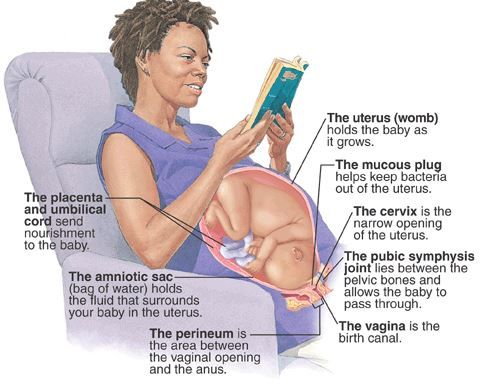Braxton Hicks Contractions

Contents:
- Description of Braxton Hicks Contractions
- True Labor Pains
- How to Recognize True Labor Pains
- How to Behave During Braxton Hicks Contractions
- Is Pain in Belly a Sign of Labor
What are Braxton Hicks Contractions?
Before labor a pregnant women may experience false labor pains, which are called Braxton-Hicks contractions. They may be felt in the second trimester, but most often they occur in the third trimester of pregnancy. Braxton Hicks contractions are sporadic uterine contractions, which do not show any disturbance. This is the way a woman's body prepares for labor.
Description of Braxton Hicks Contractions
Braxton Hicks contractions are described as short intermittent contractions in abdominal area. Typically, false contractions are painless and irregular. There is no decrease of interval between the contractions and they do not become frequent while walking .The intensity and duration remain the same. Note, that the intensity of contractions increases only in the period of true labor.
True Labor Pains
Labor pains may be different for every woman. However, they may be accompanied by tightening pain in lower abdomen or back, and discomfort and pressure in pelvic area. Some women may have pains in their hip area or on the sides of their body. Usually, women compare such experiences with cramps during menstruation, or diarrhea.
How to Recognize True Labor Pains
It is important to contact your gynecologist immediately at the beginning of labor pains. Even if you are not sure whether you have false or true labor pains, you should contact your doctor anyway.
True labor pains can be indicated by the following signs:
- contractions, which occur every 10 minutes or more than 5 times per hour, accompanied by lower abdominal pain or discomfort;
- cramps, similar to menstrual pains;
- regular contractions in the lower abdomen or back;
- pressure in vaginal area or pelvic;
- leaking of fluid;
- bleeding;
- symptoms, such as diarrhea, nausea, vomiting.
How to Behave During Braxton Hicks Contractions

A woman should not take any special measures during Braxton-Hicks contractions, except cases when the contractions cause much discomfort or pain.
In cases where false labor contractions are painful, you can:
- walk. The contraction may pass away with changing position or movement;
- relax;
- rest or sleep;
- eat a small snack;
- drink water, herbal tea or juice;
- get a massage.
Is Pain in Belly a Sign of Labor
Probably not. Sharp or shooting pain in any side of abdomen area (called round ligament pain) which goes into groin, may indicate the stretching of ligaments, which support growing uterus.
To ease the discomfort in body sides you may:
- move, or change a position;
- drink much water, milk, or juice, not less than 6-8 glasses a day;
- rest.
Very often, during false labor contractions a pregnant woman may feel uncomfortable about bothering her healthcare provider. So, when is it necessary to call a doctor?
A gynecologist, who observes a woman during pregnancy, should be able to meet any time to answer all questions and help in distinguishing false pains from true labor beginning. Feel free to call your doctor if you have even a slightest doubt. The doctor will ask you a few questions and the answers will help to determine the type of contractions. If you have any doubts about the pregnancy state, it is better to consult a specialist.
Urgently call a doctor, if you notice any of these symptoms:
- vaginal bleeding;
- strong contractions every 5 minutes for an hour;
- a sensation of fluid leaking or continuous leakage of fluid, bursting of waters (liquid starts to pour out abruptly);
- changes in baby’s movements or less than 10 movements every 2 hours;
- contractions become unbearable;
- any signs of contractions in pregnancy period less than 37 weeks.